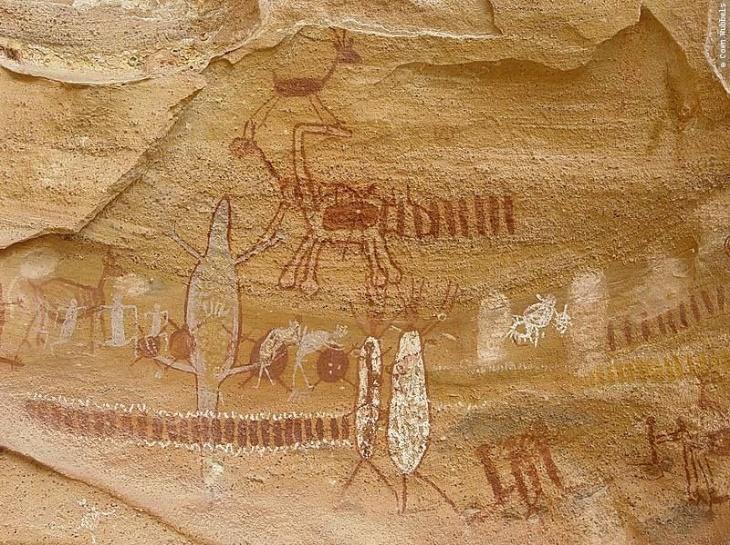Art News Know More, What is Cave Painting?
Art News
Know More, What is Cave Painting?
Have you ever wondered, why paintings can tell stories? Where did it come from? The answer can be seen from the Cave Paintings.
What is Cave Painting?
Cave paintings in Serra da Capivara National Park, Brazil
Cave paintings are graffiti, paintings, or stamps found on cave walls or cliffs made by ancient people as a medium to convey messages or records of events. Cave paintings can be called a source of glimpse into the prehistoric world and the development of human culture. Each scribble on the cave paintings contains insights into the life and artistic expression of our ancient ancestors.
When were cave paintings discovered
Altamira Cave Paintings, Spain
Cave paintings were not "discovered", but were created by early humans in the Paleolithic period that occurred between about 40,000 and 10,000 years ago. Because the existence is not hidden, the paintings will be discovered one by one slowly. One of them is in Indonesia, you know!
Various Cave Paintings in the World
Altamira Cave Paintings
Founded: 1879
Location: Spain
Discovered by: Marcelino Sanz de Sautuola (Spanish amateur archaeologist and landowner)
Marcelino Sanz de Sautuola was exploring the cave with his daughter when they discovered amazing prehistoric art. Some scholars suggest that this painting may have been used in ritual ceremonies in which a devotee goes into a cave and goes into a trance to communicate with a spiritual entity.
Lascaux Cave Paintings
Founded: 1940
Location: France
Discovered by: a group of French teenagers
They found the cave while searching for their dog, who had fallen into the hole. The teenagers noticed the incredible artwork on the walls and ceiling of the cave. The paintings likely had ritual significance and functions in "hunting magic" as well as to convey stories and narratives.
Lukisan Gua Chauvet
Found in: 1994
Location: France
It was discovered by: three spelunkers named Jean-Marie Chauvet, Eliette Brunel Deschamps, and Christian Hillaire.
The cave has been covered by rock ruins for thousands of years, preserving the artwork inside. Following the new discovery, scientists stated that abstract details contained in the Chauvet Cave paintings were thought to depict volcanic eruption events.
FUN FACT!
There are several cave paintings in Indonesia, you know! Such as Liang Kobori Cave in Southeast Sulawesi and Kontilola Cave in Papua.
Liang Kobori Cave, Southeast Sulawesi
Gua Contilola, Papua
In addition, there is also Leang Leang Cave located in Tedongnge, Bantimurung District, Maros, South Sulawesi.
Discovered by: doctoral student Basran Burhan,
as part of a survey the team conducted with Indonesian authorities. This painting is in the form of 29 hand stamps, consisting of 4 groups. And there is a 1-meter-long painting of a pig deer distilled with hand stamps. This painting is also believed to be one of the oldest cave paintings in the world and proves that early modern humans who have inhabited the South Sulawesi region have known rock art. This painting is thought to contain the meaning that the pig appears to be observing a fight or social interaction between two other pigs.
SOURCE:
https://www.historytoday.com/archive/months-past/discovery-lascaux-cave-paintings/
https://news.artnet.com/art-world/chauvet-cave-paintings-404753
https://tirto.id/sejarah-penelitian-lukisan-pada-dinding-gua-di-maros-f9zU
https://www.coklatkita.com/wisata/5-lukisan-gua-purba-ada-di-indonesia
https://www.idntimes.com/science/discovery/nena-zakiah-1/kumpulan-lukisan-gua-tertua-di-dunia



UDAYANA UNIVERSITY